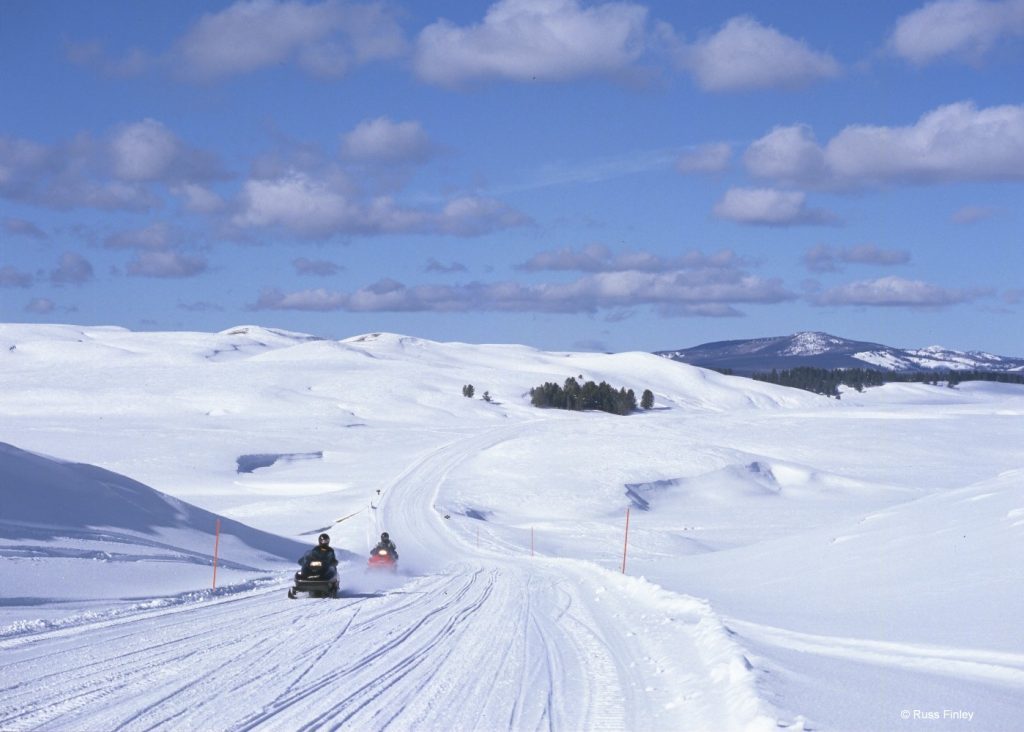GENERAL INFORMATION ABOUT SNOWMOBILING IN YELLOWSTONE
Winter Season is from mid-December through early-March.
Snowmobiling is a wonderful way to tour Yellowstone during the winter months. Because of environmental concerns, however, there are certain restrictions in place which govern the use of snowmobiles in the park.

From 200-250 machines typically enter the Park on a given day, while the winter use management plan now in place allows up to 318 machines daily. All snowmobilers are required to be accompanied by a licensed guide.
Historically, nearly 800 machines entered Yellowstone daily, following introduction of snowmobiles into the Park in the 1960s.
The current winter use management plan ensures that resources are protected, gives visitors, employees and residents of the park’s gateway communities the information they want and need to plan for the near term, and helps minimize economic impacts on gateway communities.
RENTING SNOWMOBILES
Snowmobiles must be rented from commercial operators in Yellowstone’s gateway communities. Click here for a listing of commercial snowmobile operators.
Non-Commercially Guided Snowmobile Access Program
The Non-commercially Guided Snowmobile Access Program permits people to snowmobile in Yellowstone without the presence of a commercial guide. Up to four non-commercially guided groups are allowed to enter the park daily: one at each oversnow entrance.
Who Can Apply
Anyone who is at least 18 years of age can apply to be a non-commercial snowmobile guide.
How to Apply
Permits are awarded through a lottery system hosted by www.recreation.gov (877-444-6777). Permits cost $40/day plus a $6 application fee. Lottery applications are accepted August 1 to 31. Permits are awarded in mid-September.
EQUIPMENT AND CLOTHING
Winter temperatures are severe in Yellowstone, but you can be comfortable and confident if you are properly dressed. Prepare for changing conditions by wearing clothes in several adjustable layers. It is as important to prevent overheating as it is to prevent chilling.

Be sure your clothing includes a windproof, hooded outer layer with wool or other insulated garments underneath. Wool or synthetic trousers and long underwear will help to keep your legs warm and dry in deep snow. Wind or rain-pants are lightweight and provide extra warmth on windy days. Avoid cotton jeans and sweatshirts. Thick wool socks and gaiters over boots help to keep your feet warm and dry. Wear gloves or wool mittens with shells that breathe to allow moisture to escape from sweaty hands.
Since you lose more heat through your head than any other part of your body, wear a face mask-style stocking cap or parka hood when you need maximum protection. Dark sunglasses are a must for sunny days. High altitude sunlight reflected from snow is much more intense than at lower elevations; snow-blindness may occur if sunglasses are not worn. Apply sunscreen lotion to exposed skin to avoid sunburn.
